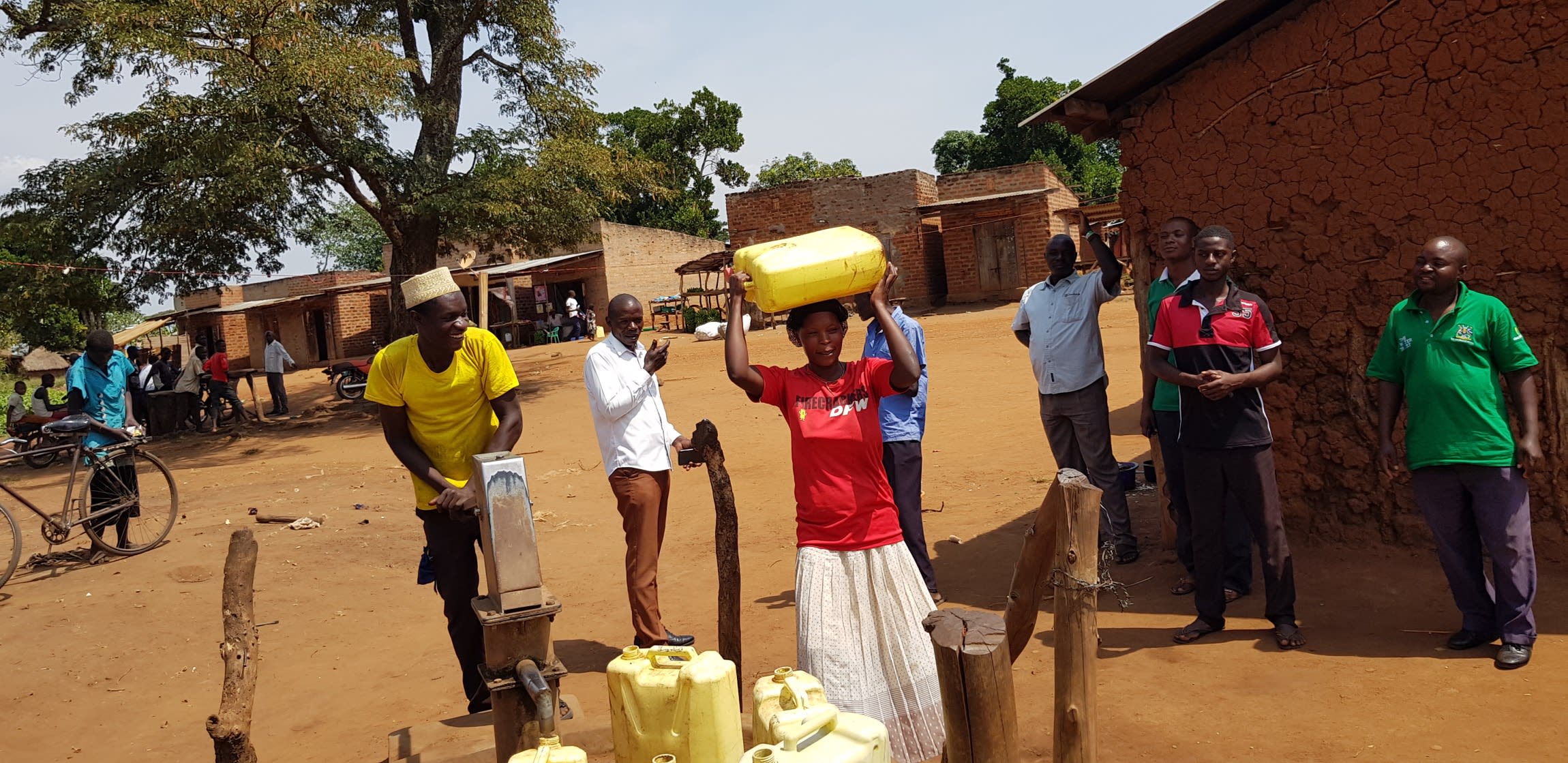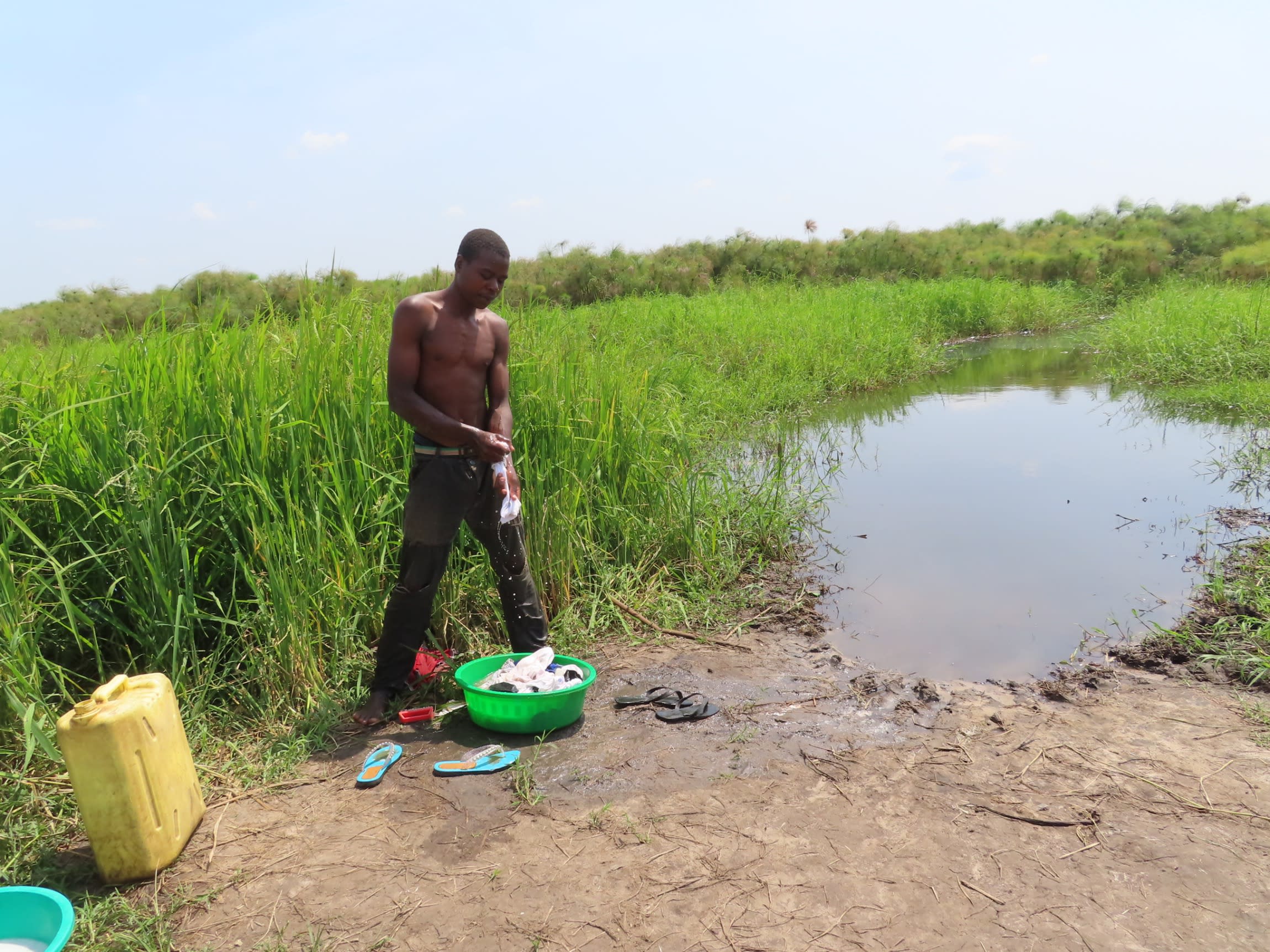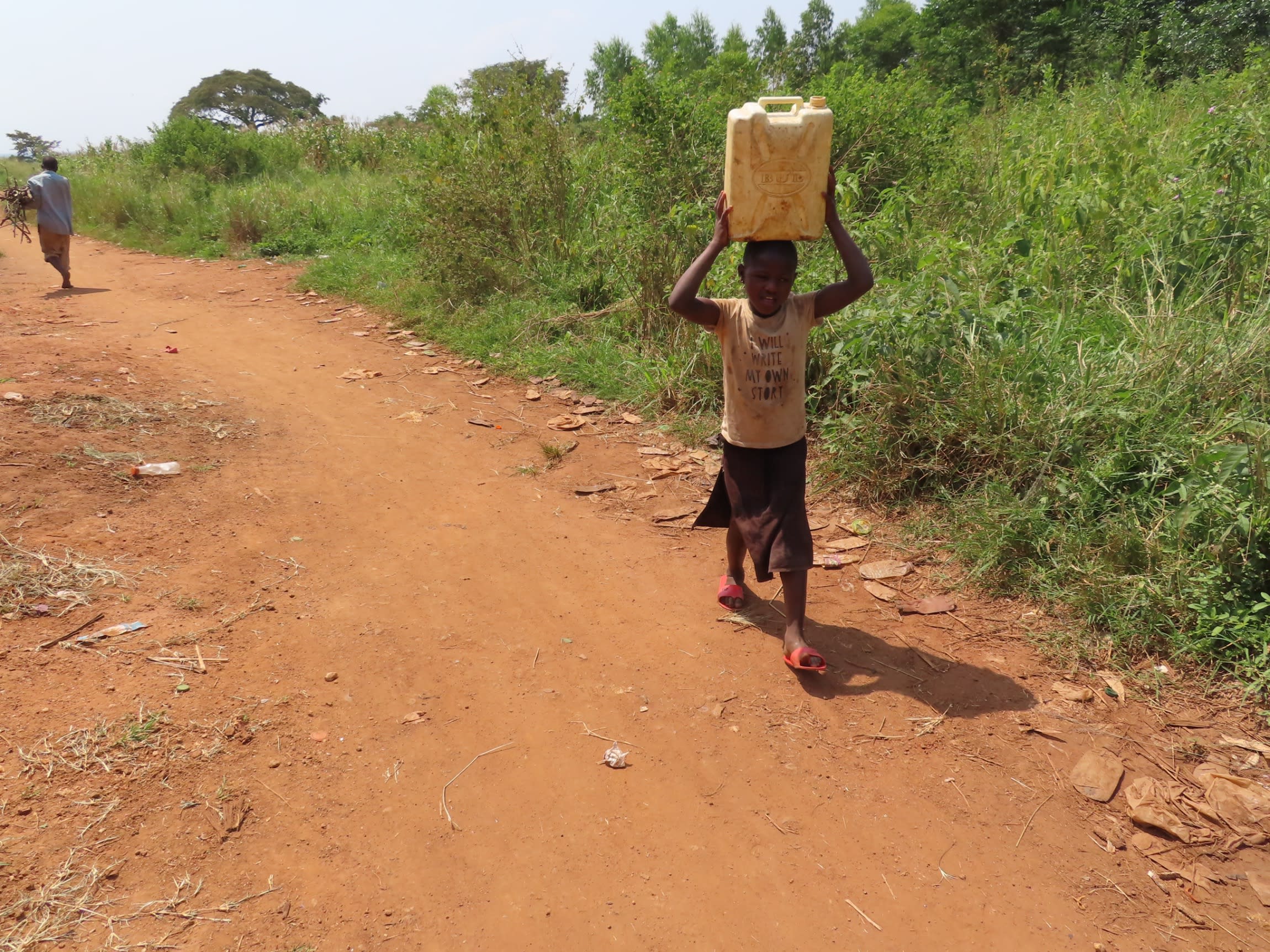Currently, the 300 people of Kihangani Ruhambya must travel three kilometers (1.86 miles) every day to get water from the local trading center's borehole well. This is the only source of clean water for several neighboring communities, which means there is always a line of people waiting to fill their jerrycans. Unfortunately, because there is such a strain on the well (estimates say it serves around 2,300 people at the moment), the pump often breaks down, especially during the region's dry season, which lasts for several months.

"There is a lot of suffering as far as access to clean drinking water is concerned," said 25-year-old Faustina Twinobusinge (pictured above in the red shirt at the trading center well). "A lot of productive time is wasted in collecting water."

"I walk a distance of about two kilometers (1.24 miles), spending one to two hours to get water home," Faustina continued. "This makes me either not have breakfast, because I have to go very early in the morning to get water, or even have lunch late because a lot of time is spent on collecting water."
When the trading center's well breaks down, people go to the river Kafu, but its water has been known to make people sick. When visiting the river, it's not uncommon to see people bathing, laundering clothes, or watering their livestock in or around the water. All of these activities, coupled with the area's wildlife, contaminate the water.

"Kihangani Ruhambya as a catchment has no water point," said Jenerose K., who is nine years old (pictured below on her way home from the trading center well).

"We walk a long distance to the only water point in the village, and there is always a very long queue at the water point, especially during [the] dry season. I spend a lot of time on the way, and even at the water point waiting for [the] long queue, which takes me about one to two hours to get back home with water."
"This community urgently needs water," Faustina concluded.
Here’s what we’re going to do about it:
New Borehole
This new borehole is an exciting opportunity for this community! We work with the community to determine the best possible sites for this well.
We conducted a hydrogeological survey and the results indicated the water table is an ideal candidate for a borehole well. Due to a borehole well's unique ability to tap into a safe, year-round water column, it will be poised to serve all of the water needs for this community, even through the dry months.
Community members will help collect the needed construction materials such as sand, rocks, and water for mixing cement. They will also provide housing and meals for the work team, in addition to providing local laborers. We will complement their materials by providing an expert team of artisans and drilling professionals, tools, hardware, and the hand-pump. Once finished, water from the well will then be used by community members for drinking, handwashing, cooking, cleaning, and much more.
Training
Training’s main objectives are the use of latrines and observing proper hygiene practices since these goals are inherently connected to the provision of clean water. Open defecation, water storage in unclean containers and the absence of hand-washing are all possible contaminants of a household water supply. Each participating village must achieve Open Defecation Free status (defined by one latrine per household) prior to the pump installation for this borehole well.
This social program includes the assignment of one Community Development Officer (CDO) to each village. The CDO encourages each household to build an ideal homestead that includes: a latrine, a handwashing facility, a separate structure for animals, a rubbish pit and a drying rack for dishes.
We also implement the Community-Led Total Sanitation (CLTS) approach with each of our village partners. This aims to improve the sanitation and hygiene practices and behaviors of a village. During these sessions, village leaders naturally emerge and push the community to realize that the current practices of individual households – particularly the practice of open defecation – are not only unhealthy, but affect the entire village. CLTS facilitates a process in which community members realize the negative consequences of their current water, sanitation and hygiene behaviors and are inspired to take action. Group interactions are frequent motivators for individual households to build latrines, use them, and demand that other households do the same.
Improved Sanitation
The aim is that all households own an improved latrine. Many households do not use a latrine but use the bush. Due to open defecation, feces are spread all over the village. This leads to waterborne diseases and contamination of groundwater and surface water. Our aim is that the community is able to live a healthy life free of preventable diseases. We endeavor that at the end of our presence in the community, people will have both access to sustainable, clean water and access to sanitation. We have now organized families to form digging groups for latrine construction, and empowered them with tools to use.

 Borehole Well and Hand Pump
Borehole Well and Hand Pump
 Rehabilitation Project
Rehabilitation Project












